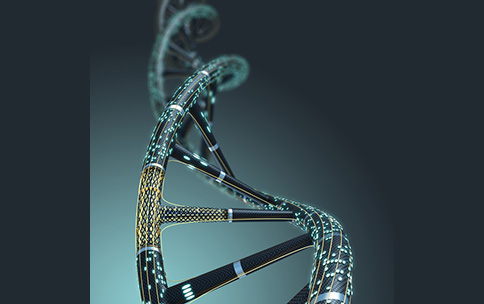
Evolution is a powerful process that selects for traits best suited for a particular environment, and now scientists are using an accelerated version of it to create proteins best suited to their needs. In a new method, Edward Boyden (2013 Pioneer, 2012 & 2013 Transformative Researcher, 2007 New Innovator) and his team use microscopy and a robot capable of extracting individual cells to screen millions of proteins using multiple parameters to find the best performing protein. To begin, Boyden and his team take a gene of interest and make millions and millions of mutant versions of that gene and insert them into cells. The proteins produced by those mutants are then screened under a microscope for the highest expression of the desired traits, and a robot individually plucks out the best performing cells for identification. The strategy is inexpensive, easily done, and enables the assessment of hundreds of thousands of protein variants in a few hours. Boyden and his team applied their strategy in the search for a fluorescent molecule resistant to photobleaching (fading from exposure to light) and capable of rapidly measuring electrical activity in neurons. They made 1.5 million mutated versions of a light-sensitive protein called QuasAr2 and put each one into a single cell. The cells were grown in a lab dish and assessed for their cellular location and the brightness and resilience of their fluorescence. A robot removed the top five candidate cells from the dish. The five candidates then went through another round of mutations to generate eight million new candidates, of which seven were selected as top candidates. The top overall performer is called Archon1. The protein embeds itself into the cell membrane, the most accurate place to measure a cell’s voltage, and produces a fluorescence comparable to the voltage running through a cell with minimal photobleaching. Boyden and his team inserted the Archon1 gene into the brain cells of mice, zebrafish larvae, and the worm Caenorhabditis elegans and were able to successfully measure electrical activity in the brain tissue. When the brain cells were exposed to light, Archon1 fluoresced at an intensity matching the time and voltage of the light exposure. Boyden believes Archon1 will allow scientists to map entire neural circuits in the brain and understand how they produce specific behaviors. And scientists have a powerful new method to engineer complex proteins—inspired by Mother Nature.
Reference
- A Robotic Multidimensional Directed Evolution Approach Applied to Fluorescent Voltage Reporters. Piatkevich KD, Jung EE, Straub C, Linghu C, Park D, Suk HJ, Hochbaum DR, Goodwin D, Pnevmatikakis E, Pak N, Kawashima T, Yang CT, Rhoades JL, Shemesh O, Asano S, Yoon YG, Freifeld L, Saulnier JL, Riegler C, Engert F, Hughes T, Drobizhev M, Szabo B, Ahrens MB, Flavell SW, Sabatini BL, Boyden ES. Nature Chemical Biology. 2018 Feb 26. doi: 10.1038/s41589-018-0004-9.



